(Backdated. Posted 26/8/2017)
Good morning! It’s 5:30am! Here’s your breakfast tray!
Actually the sleeper train wake-up call was not as perky as that. And it was fine getting up, despite being early, because I’d set my phone to beep 10 minutes beforehand.
I pulled up the blind and looked out the window. We were sitting in Paddington Station in London. I felt like I’d had a great sleep, and I certainly have no recollection of any noise as we arrived.
By 6:30am we were all dressed and leaving the train.
Having missed it the week before, we found the Paddington Bear statue – right next to where we’d arrived on platform 1, and decorated with cards and momentos due to the recent passing of author Michael Bond.
At the Underground station we bought one Oyster card, and loaded some money on it, but the rest of us used credit cards, which despite being from outside the UK, worked perfectly for this short hop and for our travels around London the following week.
The tube to St Pancras didn’t take long, even with a change at Edgeware Road, because the Circle Line isn’t a proper circle anymore… hmm, Wikipedia describes it as a spiral.
I’d booked Eurostar tickets from London to Brussels which seemed pretty good value: 33 € (A$50) each on the way over, 41 € ($62) on the way back the following Tuesday. It’s hardly surprising that Eurostar has won a huge market share from the airlines.
It took a couple of goes to get the machine to work, but I collected our tickets (they look like airline boarding passes; perhaps no coincidence) and we joined the queue.
Our train to Brussels was due to leave at 8:04. Eurostar staff were calling out for people for the earlier train to Paris to help them skip to the front of the queue, as their earlier departure time was approaching.
We went through a security check – presumably not quite as strict as airports, since there’s no checked-in luggage, so they can’t ban all sharp objects.
Then we went through border control: one UK (departing) and one France (entering). I guess with France and Belgium having an open border, it doesn’t much matter. In fact our train was scheduled to stop at Lille in France along the way.
At the desk adjacent, a lady with a recently expired passport was pleading with the French policeman to be let through. I could see him shaking his head, though later on I think I spotted her, so she must have convinced him.
We sat in the departure lounge for a couple of minutes, then they called us up for our train; we found the appropriate escalator for our carriage and up we went to the platform and onto the train.
I think we scored a new train; even in Economy/Standard class it had WiFi, powerpoints, and little TVs on the ceiling showing our speed and location. (The train back a few days later didn’t have these.)
Eurostar used to run along high-speed lines with overhead power in France, but revert to lower speeds and third-rail power in England. This all changed last decade when the fast line (known as High Speed 1) from the Channel Tunnel to St Pancras opened. High speed domestic trains use the line too.
As we zoomed through the countryside at about 270 km/h, I was reading Twitter about the Metro meltdown occurring at home. A fault in the train control system had shut down the entire network. Yikes.
Normally I don’t live-tweet my holidays; I like to save most of it up for these blog posts later. But in this case, I felt obligated to post a sympathetic message.
Sigh. #MetroTrains #MetroBingo #SpringSt https://t.co/IVNIYhcKcq 🚆❌ pic.twitter.com/uiE4Jc8qVk
— Daniel Bowen (@danielbowen) July 13, 2017
Melbourne, I feel your #MetroBingo pain and anger, but I confess I am not there to suffer through it with you. Here’s a clue where I am.???????? pic.twitter.com/401e8ff3bQ
— Daniel Bowen (@danielbowen) July 13, 2017
I didn’t notice any Eurostar announcement when we reached the tunnel; I just noticed the windows had gone dark. Shades of that scene The Goodies “Orient Express” episode.
We zipped through Calais (lots of barbed wire around the rail lines to guard against unauthorised entry from attempted immigrants) and before too long reached Lille.
It appeared a group of 2 French and 2 Belgian police were on the train patrolling together. I don’t know if they share duties or they check who’s got jurisdiction (depending on location) if they need to apprehend anybody. It’s not so long ago that an armed attacker on a high speed train from Amsterdam to Paris was stopped by passengers, which did result in calls for more security on cross-border trains.
It was a reminder that Europe (including the UK) has suffered from terrorism a lot in the past few years. In Belgium we would see numerous troops on the streets, and as I write this on 26th August, there are reports of a man attacking soldiers in Brussels with a machete.
We rolled into Brussels Midi/Zuid (South) (why does it have two names?) on time at 11:05 — discounting the time difference, that’s 121 minutes after leaving London.
Apparently the distance is 373 km. I make that an average speed of 185 km/h, with the top speed being 300 km/h. (In comparison, the fastest Melbourne to Geelong train takes 55 minutes to travel 81 km, or an average speed of 88 km/h, with a top speed of 160 km/h.)
Signs in four languages greeted us in the station, as well as a two Tintin murals – one a moderate size, one huge.
Despite the prior warnings of pickpockets galore around the station, I saw no signs of trouble – perhaps the strong presence of police and army personnel had chased the pickpockets elsewhere.
We walked to our accommodation, an AirBNB flat in nearby Saint-Gilles. Yes, I’d deliberately chosen something in walking distance from the station.
Much of the way was uphill, and it always seems further when you’re not familiar with the geography, let alone hauling luggage. A pattern emerged that would become common for the rest of the holiday, in the big cities: I and J would storm off ahead, with M and myself falling a little behind. I’d be navigating via my phone, and I’d occasionally get looks back from the boys for guidance as to which direction to go next. Mostly they didn’t miss any turns and have to double back. Mostly.
It was about 11:30. Officially check-in was at 18:00, but our host was only too happy for us to drop the bags and come back later after the place had been cleaned.
We went to have a walk around. I wanted to find an ATM to get some cash in the local currency, and by this time we were thinking about lunch.
I haven’t travelled all that much, and even less in non-English speaking countries. Actually in Brussels (no doubt in part thanks to the EU headquarters) most people speak English, but bear with me.
Having not been in a country where English was not the first language is something I hadn’t done since 1999.
Millions of people are in this situation every day, of course, having to live and work in places where they don’t speak the language.
But I found it confronting. And humbling. I was in a strange place, without a clue as to how to do something as simple as order a meal. I’d glanced at a phrase book on the train, but my French was pretty much nonexistent.
We resolved the lunch situation by finding a chain store called Hector Chicken. Even I, not speaking a word of French and having no cash, could deal with saying “Chicken burger” and “Fanta” and handing over a credit card.
It wasn’t brilliant food, but it kept us going while we steeled ourselves to explore some more.
And the more we explored, the more we discovered how many Belgians speak perfectly good English.
We went into a metro station to buy a “Mobib” public transport smartcard. In fact we lucked out finding a staffed station – the bloke in the booth was enormously helpful, letting me know that we didn’t actually need to buy four of them – you can just touch the card multiple times to let multiple people through the gates, and pay the appropriate number of fares.
This was extremely handy for our group of four tourists. One card to buy and top-up, and it also means you more easily get the discounted bulk rate: 10 rides for 14 Euro (one ride is 2.20). I’m not sure any of the other PT smartcards I’ve used (London, Singapore, Perth, Brisbane, Sydney, and certainly not Melbourne) can do this.
But we still hadn’t found an ATM. Unlike in Australia where ING is an online-only bank, with no branches, ING branches were all over the place, and at least their familiar name made it easier to search on Google Maps for branches – since a search for “bank” or “ATM” or “cashpoint” didn’t seem to be working well.
One ING branch had all its ATMs out of service. Another one I tried didn’t like my card (though happily didn’t eat it, as had happened in Bath). Eventually we found one that worked.
At a tourist information place we got a few brochures to look at later. We’d be in Brussels for 5 nights, so we’d need to find some things to do!
Nearby we spotted a gallery holding an exhibition of artworks by Belgian surrealist Magritte. This was a good escape from the heat, and as a bonus, I+J got in for 2 euros apiece, as they had a cheap “youth” (under 25) admission.
After that we kept walking around. It was pretty hot, and at one stage I tried to order an ice cream cone from a street vendor (who unlike almost everybody else, didn’t speak English, and didn’t know the word “cone”), but managed to order waffles instead. Okay, my fault — roll with it. Tasty.
We looked in the very impressive Galeries Royales Saint-Hubert (arcade) and the nearby Grand Place, which has some stunning 17th century buildings.
From there we headed back to our accommodation, spotting the Tintin mural along the way, as well as the Mannekin Pis, in a street teeming with fellow tourists, and (less interestingly) a supermarket to get some supplies.
A bit of a rest, then we went out hunting for dinner. At first we found a brasserie that had been recommended… but discovered they only serve drinks and dessert. Obviously in Belgium a brasserie doesn’t necessarily have the same meaning as in Australia.
Eventually we found a street nearby with lots of restaurants. And — jackpot — a whole row of ATMs!
We settled on a Turkish place, and ate well.
It was getting late, but not too dark – by the time we headed back to the flat it was 11pm. Time for some rest. With 26,000 steps behind us for the day, we’d earnt it.


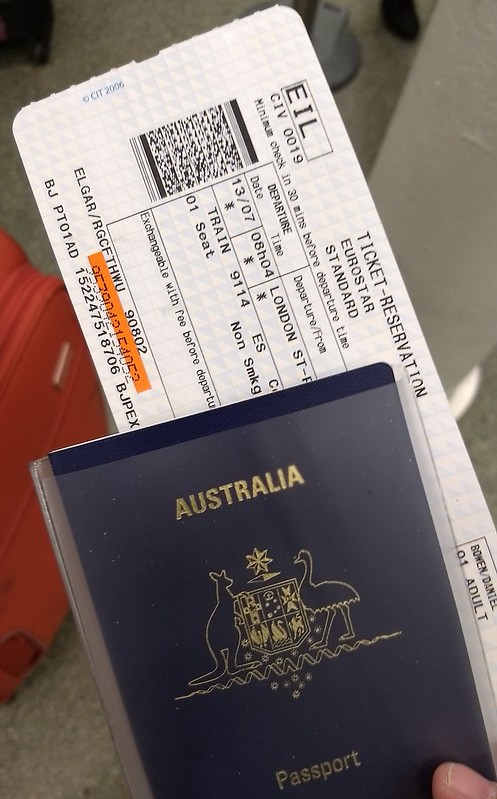
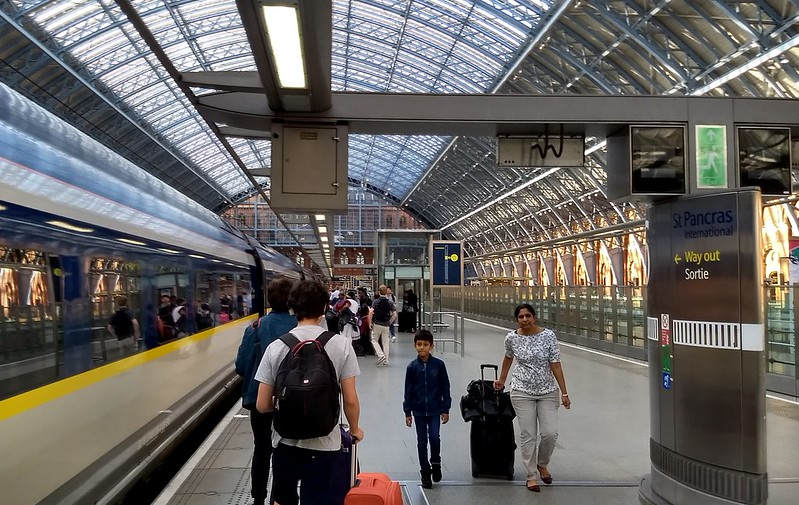

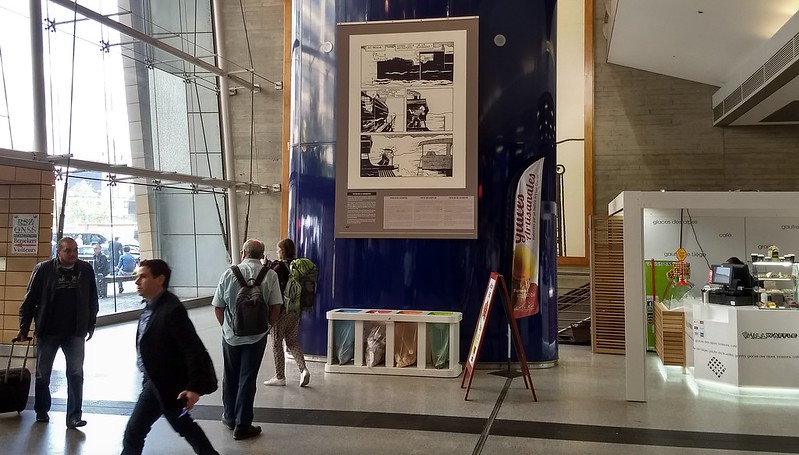
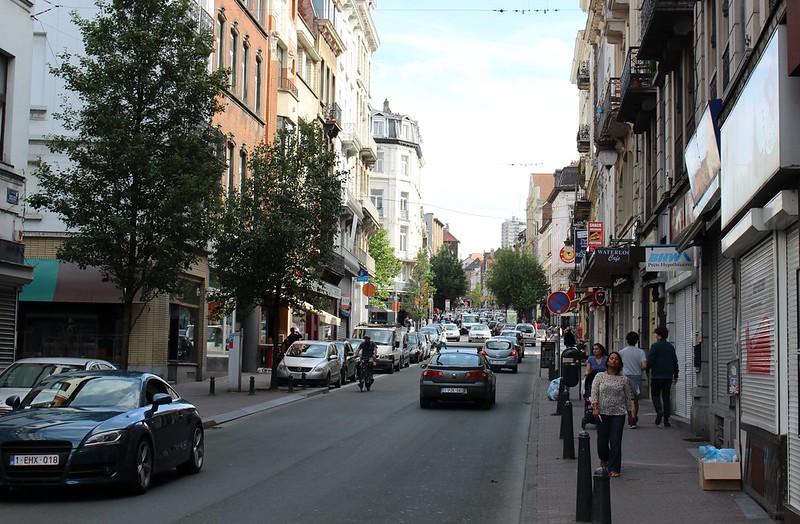
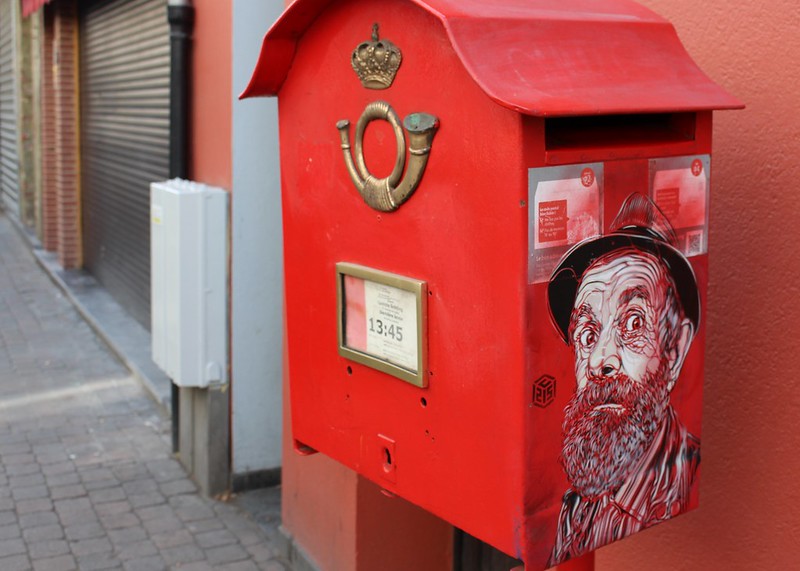

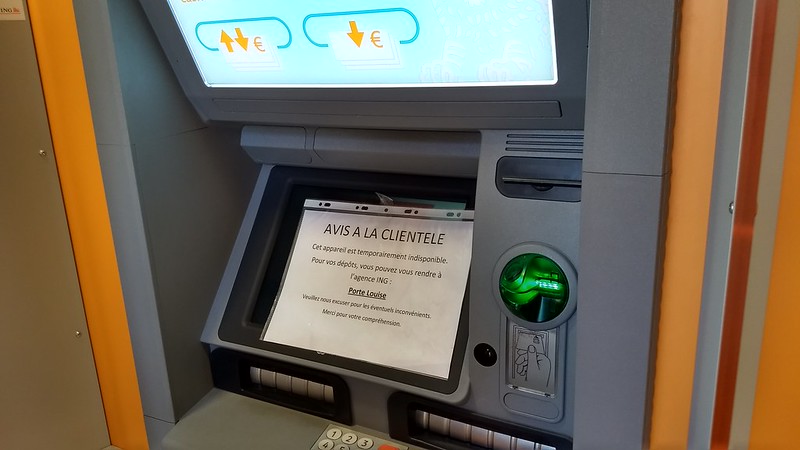
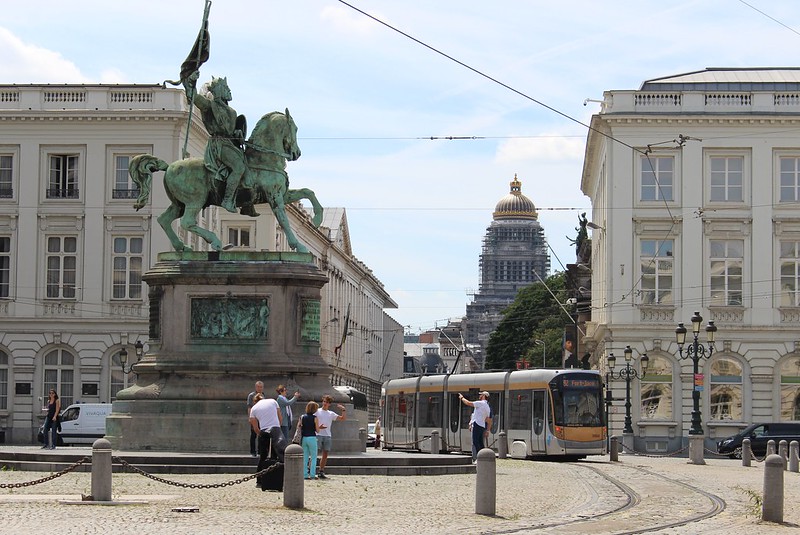

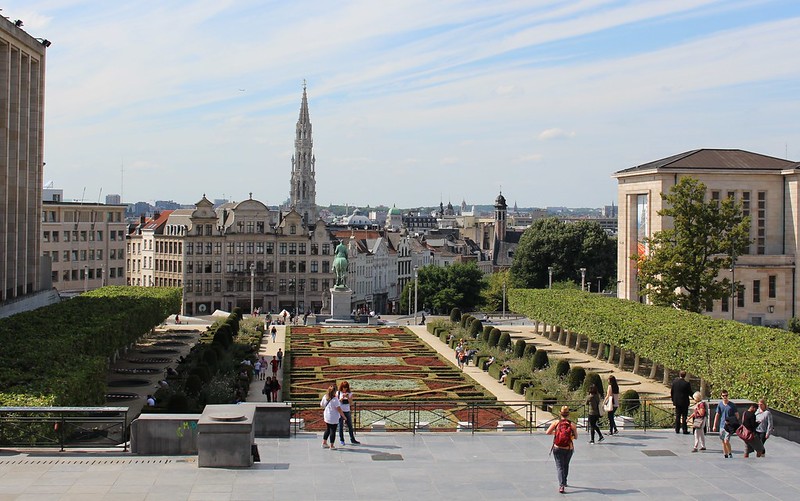
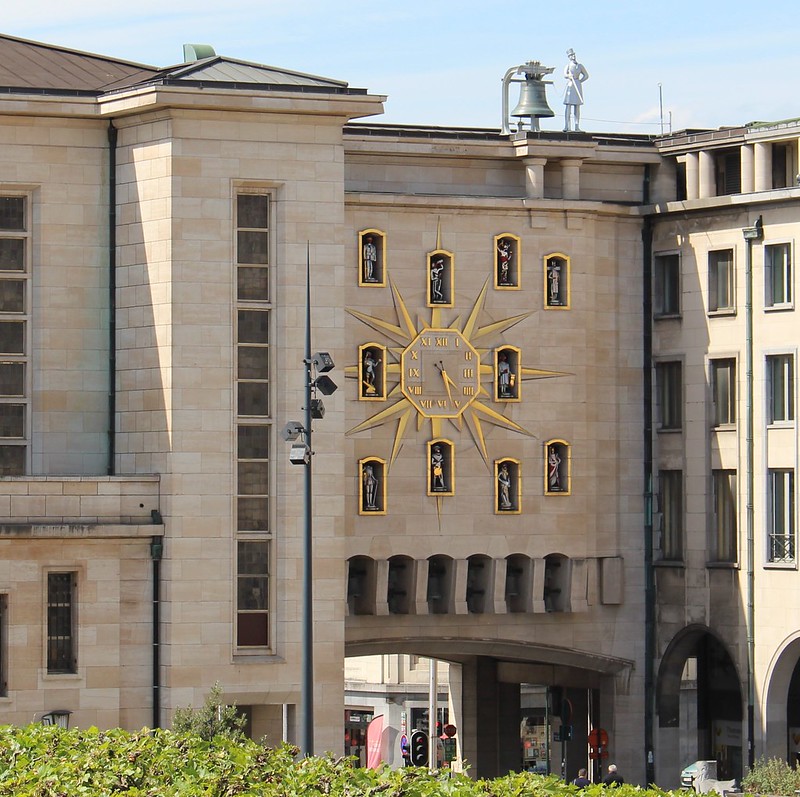
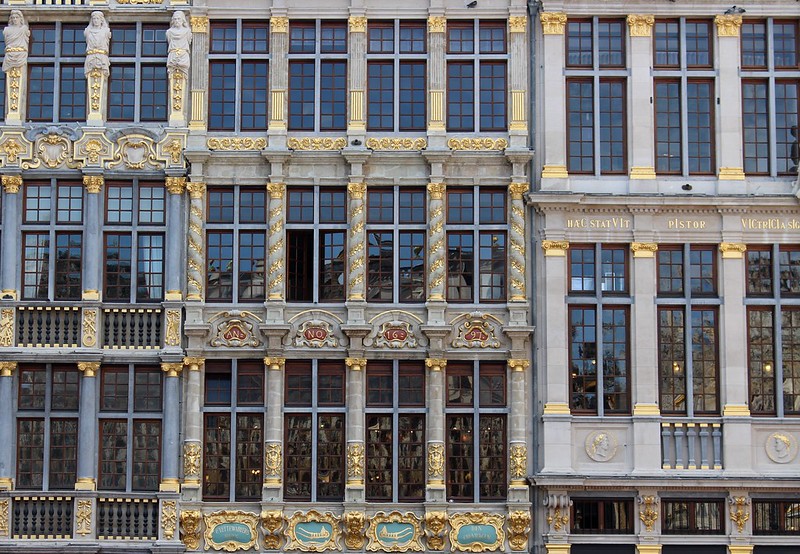
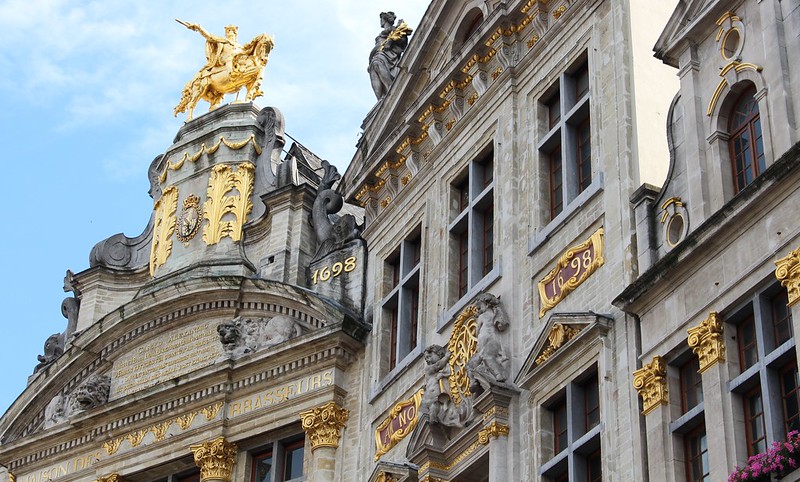
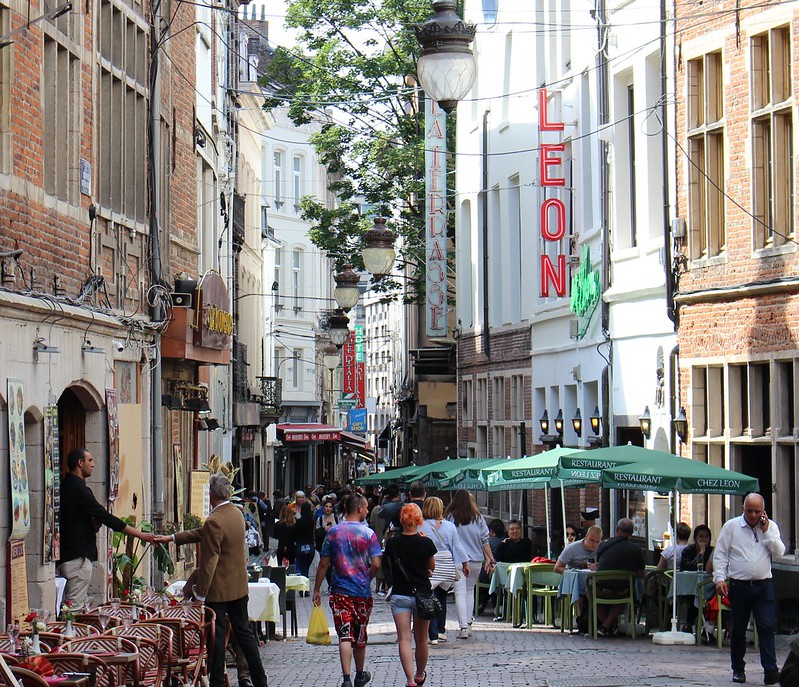


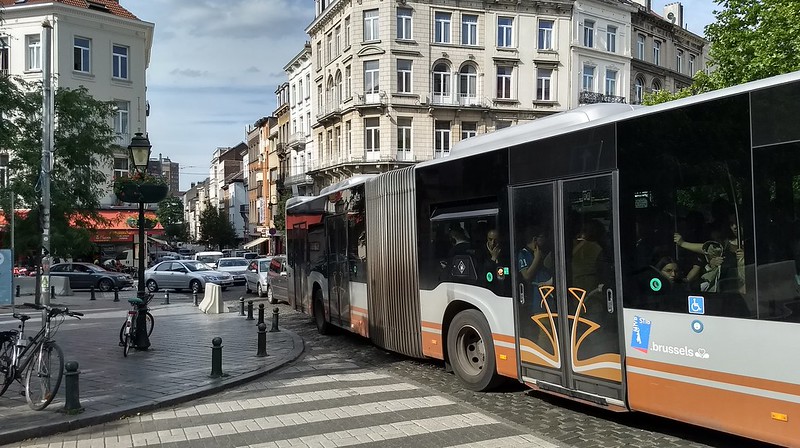
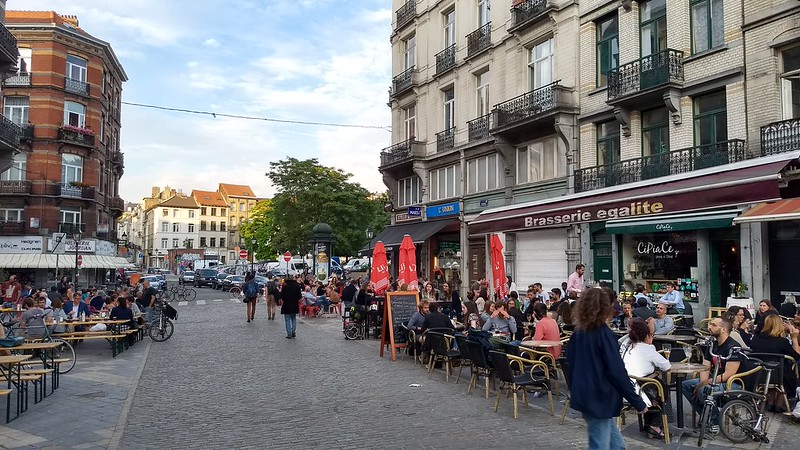
7 replies on “Two hours to Brussels”
Something that often confuses visitors to London are the two completely different Paddington Tube stations which connect to either side of Paddington Train (National Rail) Station.
Both tube stations serve different parts of the spiralled Circle line. One of them allows westbound travel all the way around the circle and back to the other Paddington tube (via King’s Cross), but the other terminates at Edgware Rd westbound.
To this day visitors still arrive and (understandably) don’t notice the two separate stations, and end up in all manner of confusion attempting to figure out how two separate stations with the same name, serve the same line in totally different ways.
Nice. I did the same Eurostar trip to Brussels in 2014, then a side-trip to the Waterloo battlefield to research a travel story.
Re the “Midi/Zuid” thing – Belgium is a bilingual country with a French-speaking south and Dutch-speaking north, hence the two terms. Brussels itself is more of a French-speaking place, however.
@Jeremy, ah of course! I should have worked that out when looking at the tube map. I don’t recall seeing signs for the “other” Paddington tube station, but perhaps they were there somewhere.
@Tim, but (unless I’m completely wrong) “Zuid” means South, but “Midi” doesn’t. Does it just mean it’s smaller than the Central station?
@Daniel: yeah the signs really don’t help unless you really focus on them or plan in advance. It’s unexpected as the rest of the tube doesn’t need much forethought.
Only one tube station has Hammersmith & City Line, and only the other has District line. Easier to look for those signs than Circle signage which points to Either/both. Changing at Edgware Rd is fine though, really.
“We rolled into Brussels Midi/Zuid (South) (why does it have two names?) ”
French and Flemish
” but (unless I’m completely wrong) “Zuid” means South, but “Midi” doesn’t.”
“Midi” means “the south” in French. “Sud” also means south, but used in a different way.
A lot of those cities have 2 or 3 or 4 or 5 or 8 mainline stations, and many of them are known by names which tend to reflect where the trains from them go to, and not necessarily the location of the station in relation to the centre of the city.
@enno, thanks!